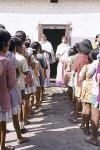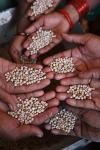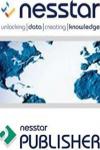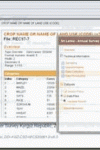Projects
This section provides information on former and current projects, implemented by the IHSN. The IHSN seeks to develop or disseminate guidelines, standards, and best practices related to all stages of survey implementation. The projects are organized into five categories: Survey planning and integration, survey methods and assessments, data curation, survey cataloguing, and microdata dissemination.
Survey planning, coordination and integration
Code of Practice for Household Surveys
Lack of coordination among survey producers and sponsors has resulted in inefficiencies (duplication of activities, lack of support in some countries) and other issues (poor comparability of data, quality issues, conflicting technical advice, etc).
... Read more
Designing survey programs
Many statistical agencies involved in the Accelerated Data Program (ADP) have requested guidance on how to improve their planning of survey programs. The objective of the Designing survey programs project is to provide generic guidance, based on two case studies: The Philippines National Statistical Coordination Board (NSCB) and the Ethiopian... Read more
Budgeting household surveys
Great care must be taken when creating a survey budget. Experience shows there is a tendency to overlook or undervalue the costs of certain activities, such as training of field staff or analysis, archiving, and dissemination of microdata. Survey budgets depend on local conditions in each country and specificity of each survey. Before the budget... Read more
Integration of data production
This project ,Integration of data production documented the experience of Statistics Canada in integrating its various surveys and data collection activities. The objective of the project was to produce advocacy materials showing the complexity of breaking the "silo production" approach in a statistical agency. Issues faced by Statistics Canada... Read more
Survey methods and assessments
Building a question bank
The need for coordinating survey guidelines has been emphasized in numerous high-level meetings over the last decade. To foster harmonization and improvement of data collection methodologies, the IHSN supports task forces and experts who work on assessment and help improve existing methods. The IHSN also maintains a Question Bank, which is a... Read more
Measuring education
Household surveys are an important source of information about education systems. International survey programs such as the Demographic and Health Surveys (DHS) and Multiple Indicator Clusters Surveys (MICS) have become standard sources for international databases on education statistics. Other types of surveys have been infrequently utilized... Read more
Measuring food consumption
Most countries collect data on household consumption or expenditures by implementing surveys such as household budget, income expenditure, and living standards surveys. These surveys may be implemented to provide input for national accounts or the consumer price index, to measure poverty, or for other reasons. But the data are often used for... Read more
Measuring non-food expenditures
This initiative complements our project that assessed household food consumption surveys, and uses a similar approach to assess non-food consumption data. We are designing an assessment form to evaluate the relevance and reliability of non-food consumption and expenditure data, based on the needs of various communities of users. We will use this... Read more
Gender issues in surveys
In 2006, the Inter-agency and Expert Group on Gender Statistics (IAEG-GS) was formed to foster collaboration and cooperation for the development of gender-relevant and sex-disaggregated statistics. The IAEG-GS selected a set of gender indicators that built on the Beijing Platform for Action and the Millennium Development Goals (MDGs).
... Read more
Standardized health survey modules
Around the world, household surveys are an essential vehicle for the collection of information on health outcomes, determinants, utilization of health services and coverage of interventions. Household surveys also allow disaggregation of information by equity stratifiers to measure distribution of risks, outcomes and interventions. Surveys... Read more
Data for food fortification programs
Nutritionists generally maintain that food intake surveys are the gold standard for collecting individual food consumption data. Food intake surveys, however, are expensive, difficult to administer, and subject to considerable measurement error. There is now increasing recognition that Household Income and Expenditures Surveys (HIES) are an... Read more
Use of household surveys in national accounts
The purpose of this project was to describe the many possible uses of household surveys (HIES in this document) in the compilation of national accounts. The main goal was to identify criterias of reliability and relevance of household surveys from the point of view of national accounts (and CPI) compilers, to eventually develop guidelines for the assessment and improvement of household surveys.
Survey quality assessment framework
The Survey Quality Assessment Framework (SQAF) checklist is a series of questions written to help survey managers improve the quality of their surveys. It asks questions about multiple aspects of the survey process, encourages checking, documentation and implementation of systems to minimise the introduction of errors and ensure completeness of information.
Data analysis and use
Sample calibration
In industrialized countries, response rates in household surveys are often low and have been steadily declining for at least two decades. Sample calibration techniques are therefore implemented, taking advantage of ancillary information to adjust the sample weights.In developing countries, response rates are typically high (usually above 90... Read more
Generation of synthetic populations
The International Household Survey Network (IHSN) and the World Bank Development Data Group (DECDG) collaborated on a project aiming to promote the use of existing survey and census microdata for agent-based simulations and micro-modeling. An important component of this project was the development (or improvement) of methods and tools for the... Read more
Dynamic micro-simulation for population projections
This project aimed to demystify the use of dynamic micro-simulation for population projections and to demonstrate its feasibility and relevance in the context of developing countries. Advanced and freely available programming tools and improvements in the availability and quality of micro-data have helped make dynamic micro-simulation feasible... Read more
Outliers in consumption surveys
Poverty and inequality are measured based on household consumption or income expenditure data, or in some cases on household income data. The same survey datasets are used for multiple other purposes, such as analyzing and monitoring changes in household consumption patterns.
... Read more
Stata for survey data analysis: training manual and related materials
Stata is a widely used package for survey data analysis. This manual and related materials (training dataset, example of code, exercises) will provide materials for self-training, or to be used by trainers. All commands typically used for data management, quality assessment, creation of variables, tabulation, production of graphs and basic... Read more
Data curation
DDI metadata standard
The Data Documentation Initiative (DDI) is an international metadata standard designed to describe socioeconomic surveys, censuses, and other microdata collection activities. The DDI standard is developed and maintained by the DDI Alliance, and the IHSN is an active partner in its development. Based on feedback from agencies in low- and middle... Read more
DDI metadata editor
The objective of this project is to provide data producers and data curators with a free, user-friendly, powerful specialized metadata editor compliant with the DDI standard. The IHSN supports the development of freeware developed by the Norwegian Social Science Data Archive (NSD).
... Read more
Multi-standard metadata editor
The World Bank is developing a new metadata editor, to replace the Nesstar Publisher freeware. This new metadata editor will be compatible with multiple metadata standards (DDI for microdata, ISO 19115 for geo-spatial data, Dublin Core) and will allow users to build their own metadata schemas and templates. This web-based application will be... Read more
Statistical disclosure control (anonymization) - Software Development
To address the legal issue of data confidentiality, the IHSN is producing guidelines and tools on statistical disclosure control (SDC), a.k.a. microdata anonymization, in partnership with experts and practitioners. The objective is to provide practical solutions for the assessment and reduction of disclosure risk in microdata files, which will... Read more
Statistical disclosure control (anonymization) - Practice Guide
A microdata dissemination challenge: Balancing data protection and data utility
... Read more
Preservation of microdata
This project is producing guidance to assist official data producers in defining and meeting their digital preservation requirements and obligations. The recommendations identify steps for developing an effective preservation approach suited to the needs and requirements of individual official data producers, and for complying with standards and... Read more
Survey cataloguing
Maintenance of a survey catalog
The IHSN catalog is maintained by the World Bank in collaboration with many international, regional, and national agencies. Surveys and censuses are documented using the IHSN Metadata Editor to generate metadata compliant with the DDI Metadata standard. These metadata are then published in the NADA cataloguing tool open-source software... Read more
Maintenance of a citation catalog
One key benefit from making microdata more accessible and usable is increasing the quantity and diversity of research. Experience shows that, when quality, well-documented data are made easily accessible, much analytical output is generated. It is important to document these uses of microdata. To promote access to microdata, the IHSN citation... Read more
NADA survey cataloguing software
Users must be properly informed about the existence and characteristics of available survey data. To promote the use of microdata, detailed metadata must be made available in the form of a searchable on-line catalogue. To support this effort, IHSN promotes the use of the DDI metadata standard, and is developing or sponsoring the development of... Read more
Data deposit software
Agencies and organizations who manage data archives may receive data and metadata from multiple sources. It is important to organize this data deposit in a way that would: Ensure that all necessary data and metadata are provided; Minimizes the cost of receiving and documenting the datasets for publication; Maintains information on what is deposited, by whom, and when; Provides the person or agency who deposits the data with the possibility to inform the data archive about access restrictions; Provides the depositor with a "receipt" indicating what has been deposited.
Microdata dissemination
Data dissemination policy guidelines
This project produced a guide that provides an overview of technical, legal, and ethical issues related to the dissemination of microdata. Many data producers are interested but still reluctant to share microdata, and are seeking guidance on the formulation of microdata dissemination policies and procedures. The project provides recommendations... Read more
Canada's Data Liberation Initiative
The objective of this project was to document why and how Statistics Canada decided to start sharing microdata with researchers. The experience of Statistics Canada is rich with lessons for other agencies. Statistics Canada faced the same technical, legal, ethical, and resource constraints as most agencies embarking on similar initiatives now... Read more


















